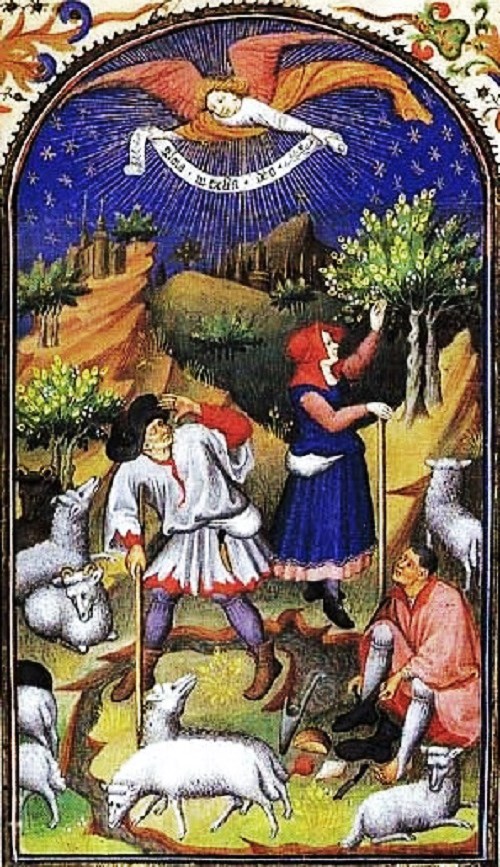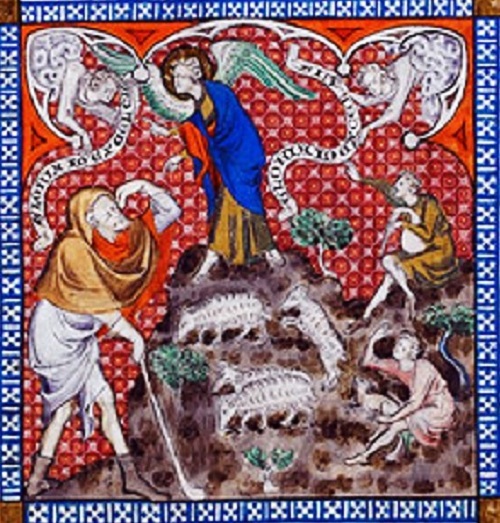In Ireland, the day after Christmas once included hunting down a small bird & tying it to the top of a pole. That’s how the Irish celebrated St. Stephens Day, or Wren Day. The name alludes to several legends linking episodes in the life of Jesus to the wren. People dress up in old clothes, wear straw hats & travel from door to door with fake wrens (previously real wrens were killed), while they dance, sing, & play music. One myth said that the robin, that was suppose to represent the New Year, killed the wren which represented the Old Year during this time.
Limerick-born Gerald Griffin (1803-1840), novelist, poet and playwright wrote of 19C wren boys in a book published after his death of typhus in 1857, called The Half Sir published in Dublin by James Duffy.
"The Wren-boys of Shanagolden] … were all assembled pursuant to custom on the green before the chapel-door on a fine frosty morning, being the twenty-sixth of December, or Saint Stephen’s Day – a festival yet held in much reverence in Mumha [Griffin has Munster], although the Catholic Church has for many years ceased to look upon it as a holiday of “obligation.”
‘Seven or eight handsome young fellows, tricked out in ribbons of the gayest colours, white waistcoats and stockings, and furnished with musical instruments of various kinds – a fife, a piccolo, an old drum, a cracked fidde, and a set of bagpipes – assumed their place in the rear [Griffin has rere] of the procession, and startled the yet slumbering inhabitants of the neighbouring houses by a fearfully discordant prelude.
‘Behind those came the Wren-boy par excellence – a lad who bore in his hands a holly-bush, the leaves of which were interwoven with long streamers of red, yellow, blue and white ribbon; all which finery, nevertheless, in no way contributed to reconcile the little mottled tenant of the bower (a wren which was tied by the leg to one of the boughs) to his state of durance. After the Wren-boy came a promiscuous crowd of youngsters, of all ages under fifteen, composing just such a little ragged rabble as one observes attending the band of a marching regiment on its entrance into a country town, shouting, hallooing, laughing, and joining in apt chorus with the droning, shrilling, squeaking, and rattling of the musicians of the morn...
Around this space the procession formed, and the Wren-boy, elevating his bush, gave out the opening stave of the festive chant, in which the whole rout presently joined:
“The Wran! the Wran! the king of all birds,
St Stephen’s day was caught in the furze;
Although he’s little, his family’s great.
Get up, fair ladies! and give us a trate!
And if your trate be of the best,
In heaven we hope your soul will rest!”’
Daniel Maclise illustration for S.C. Hall’s Ireland Its Scenery and Character (1841)
The tradition of Hunting the Wren was celebrated on Dec 26th, when a wren was captured & thought to bring good luck for the new year. In modern times, the tradition of "hunting the wren" involves musicians roaming from house to house playing music on "St. Stephen's Day" and "passing the hat."
The killing of birds on Wren Day was reportedly done by young boys also called Mummers. Originally, groups of small boys would hunt for a wren, and then chase the bird until they either have caught it or it died from exhaustion. The dead bird was tied to the top of a pole or holly bush, which was decorated with ribbons or colored paper.
Typical lyrics are:
The wren, the wren, the king of all birds,
St. Stephen’s Day was caught in the furze,
Although he was little his honour was great,
Jump up me lads and give us a treat.
As I was going to Killenaule,
I met a wren upon the wall.
Up with me wattle and knocked him down,
And brought him in to Carrick Town.
Drooolin, Droolin, where’s your nest?
Tis in the bush that I love best
In the tree, the holly tree,
Where all the boys do follow me.
Up with the kettle and down with the pan,
And give us a penny to bury the wren.
I followed the wren three miles or more,
Three miles or more three miles or more.
I followed the wren three miles or more,
At six o’clock in the morning.
I have a little box under me arm,
Under me arm under me arm.
I have a little box under me arm,
A penny or tuppence would do it no harm.
Mrs. Clancy’s a very good woman,
a very good woman, a very good woman,
Mrs. Clancy’s a very good woman,
She give us a penny to bury the wren.
The wren boys were often led by a 'hobby horse,' with a wooden head, with snapping jaws, placed on the shoulders of the 'leader.' Believed to have associations with the ancient god Lugh, the horse was thought to be of great importance in old Ireland, but like many of these old traditions, it's original meaning are often lost to us. That said, the antics of the hobby horse often made for great entertainment. They are most common in West Kerry where wrenboys and the tradition of Mummers plays and Mumming stayed very strong long after it had died out in many other parts of the country.
They wren boys often begin their festivities with this old song:
The Wren, The Wren
The Wren, the Wren the king of all birds,
St. Stephenses day, he was caught in the furze.
Although he is little, his honor is great,
Rise up, kind sir, and give us a trate.
We followed this Wren ten miles or more
Through hedges and ditches and heaps of snow,
We up with our wattles and gave him a fall
And brought him here to show you all.
For we are the boys that came your way
To bury the Wren on Saint Stephenses Day,
So up with the kettle and down with the pan!
Give us some help for to bury the Wren!
The proceeds of the collection boxes traditionally was spent on a party called a ‘Join’. Picking a house for the shindig, a barrel of porter was bought for the men and wine for the ladies. Jam, currant cake, bread, sugar and lemonade was provided for everyone. A 'great night of sport and fun, dancing and music' followed that lasted until morning.
Another Version of the Wren Song:
The Wran, the Wran the king of all birds,
St. Stephen's Day was caught in the furze,
Although he is little, his honour is great,
Put your hand in your pocket and give us a trate.
Dreoilin, dreoilin where is your nest?
Its in the bush that I love best,
Behind the holly and ivy tree,
Where all the birds shall follow me.
As I was goin' down to Youghal,
I saw a wran upon a wall,
I up with my stick and I knocked him down,
Then brought him back to Mitchelstown.
Mister_______ is a very fine man,
It was to him we brought the Wran,
You'll have luck throughout the year
If ya give us the price of a gallon o' beer.
Raise up your glasses, your bottles and cans
We toast your subscription to bury the Wran,
Up with the kettle and down with the pot,
Give us your money and let us be off!

..jpg)









+-+1599+The+Adoration+of+the+Shepherds+with+St.+Catherine+of+Alexandria.jpg)


,+Louis+Le+Nain+(c.1593-1648),+and+Mathieu+Le+Nain+(1607%E2%80%931677).++Adoration+of+the+Shepherds.jpg)












+Adoration+of+the+Shepherds.jpg)
%2BAdoration%2Bof%2Bthe%2BShepherds.jpg)




..jpg)

.jpg)
%2C%2Bc1240)%2Bshelfmark%2BArundel%2B157%2Bf.3v..jpg)


%2BAnnunciation-to-the-Shepherds.jpg)









